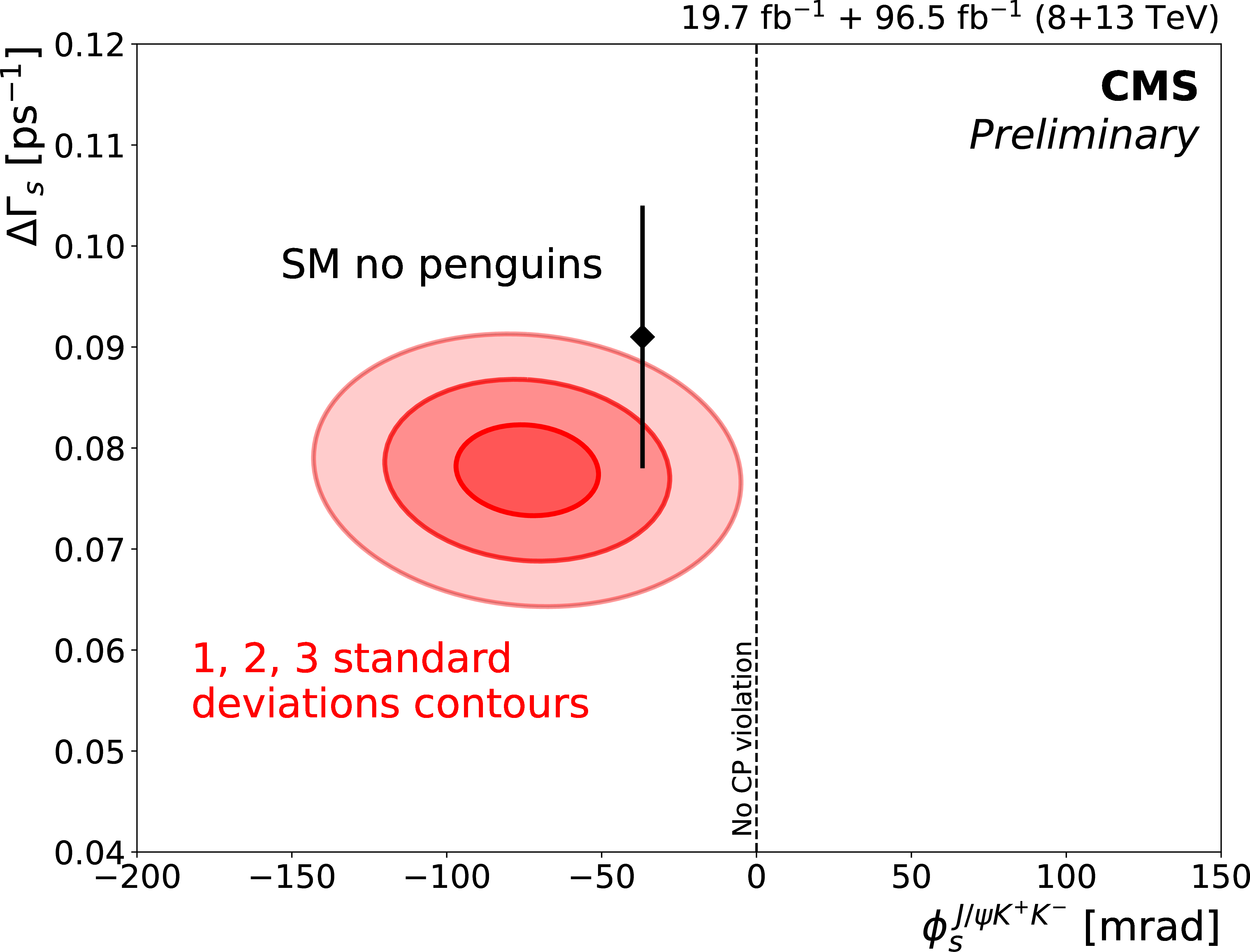
When we look at ourselves in a mirror, we see a virtual twin, identical but with left and right inverted. Charge-parity (CP) is the equivalent of a mirror for fundamental particles. If the symmetry was respected in nature, each particle would see a copy of itself, except that they would have opposite properties: charge, spin, etc. The physical laws governing Nature don’t respect CP symmetry. If they did, we would see a universe with equal amounts of matter and antimatter, as it was just after the big bang. CP has to be broken and, furthermore, one needs a large effect to explain what is observed. The standard model of particle physics (SM) can account for some level of CP violation but not enough to explain the evolution of the universe; one has to invoke new sources of CP violation, beyond the SM. This is why it is extremely interesting to study CP violation at particle accelerators, like the LHC.
CP violation can manifest itself in the so-called meson mixing. Certain mesons (particles made of a quark and an antiquark) can traverse the inner part of a particle detector before decaying to lighter particles. In their journey, they can turn into their corresponding antimeson and back. This phenomenon, called meson mixing, could be different between the meson mixing to antimeson and the antimeson mixing to meson cases. To probe this possibility, one needs to count the number of mesons and antimesons that live a certain amount of time before decaying. And then repeat the measurement for several time intervals. To do this, one has to separate mesons from antimesons, a task called flavor tagging. The accuracy of flavor tagging is what drives the precision with which one can experimentally prove CP violation in meson mixing. Measurements of this kind were already carried out by LHCb, ATLAS, and CMS, considering Bs → J/𝜓 𝜙 decays. The results of LHCb, a detector dedicated to B-physics measurements, have the highest sensitivity. None of the already published results show clear signs of CP violation.

Figure 1: Mass distribution of the Bs → J/𝜓 𝜙 decay candidates, with J/𝜓 → μ𝜇 and 𝜙→ KK, and using the LHC Run 2 data collected by CMS.
In a recent measurement using data collected in 2017-2018, CMS has used a graph neural network to separate mesons from antimesons. This is a cutting-edge AI algorithm that performs accurate flavor tagging by gathering information from the particles surrounding the Bs meson. Thanks to the AI-powered flavor tagging, the CMS measurement has reached a precision comparable to that of LHCb. Figure 1 shows the mass distribution of the events with Bs → J/𝜓 𝜙 decay candidates, with follow-up decays J/𝜓 → 𝜇𝜇 and 𝜙 → KK.
In combination with similar CMS results from Run 1, CMS reports a 𝜙s value deviating from zero with a significance of 3.2 standard deviations. Figure 2 shows the result, presented in terms of ΔΓs, a variable related to the difference in lifetime between the Bs meson and its antimeson in mixing, and 𝜙s, the variable that quantifies CP violation: if 𝜙s = 0, the CP symmetry is respected. Passing the conventional “3 sigma threshold”, this result provides the first evidence for CP violation in these Bs decays, a milestone in our CP violation program. Relying on AI, we push the boundary of what can be achieved by CMS and we open new paths to study the laws that govern the universe.

Figure 2: The one, two, and three standard deviation contours in the ΔΓs vs. 𝜙s plane, using data collected in the Runs 1 and 2 of the LHC. The contours reflect both statistical and systematic uncertainties. The SM prediction is represented by the black marker, with the vertical bar being its uncertainty.
Read more about these results:
-
CMS Physics Analysis Summary (BPH-23-004): " Measurement of time-dependent CP violation in B0s → J/ψ ϕ(1020) decays with the CMS detector "
-
@CMSExperiment on social media: LinkedIn - facebook - twitter - instagram
- Do you like these briefings and want to get an email notification when there is a new one? Subscribe here

